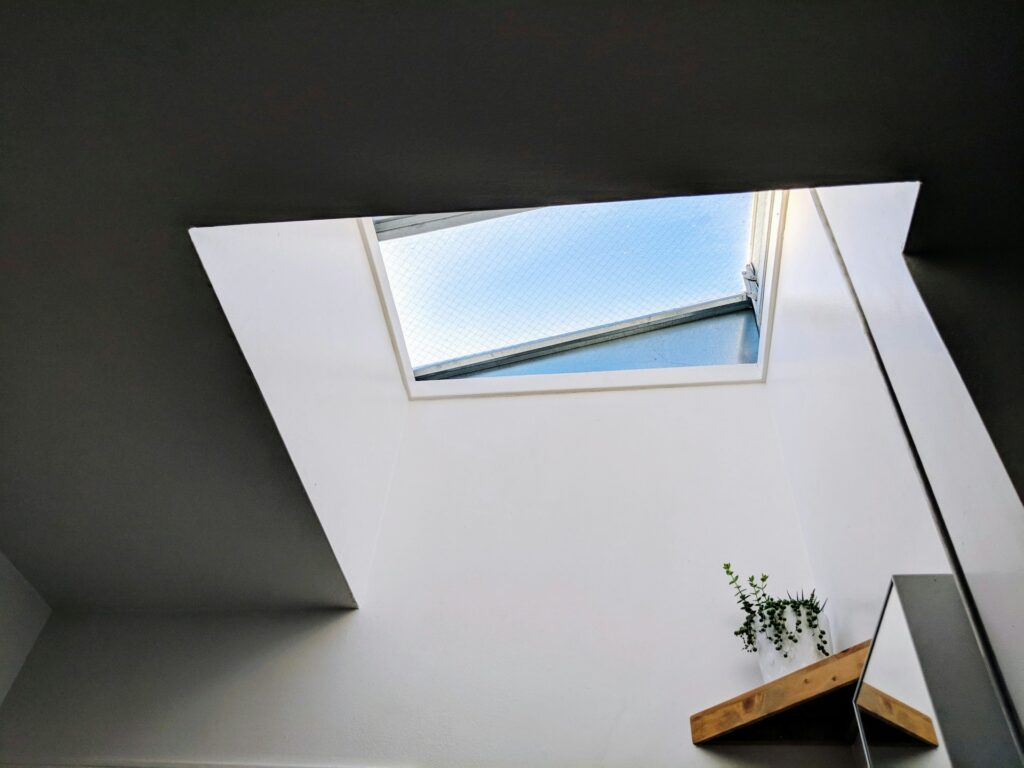Oregon’s lush, green landscapes spring from a climate that often experiences extended cloud cover and plenty of rain. For many residents, these gray months can feel a bit dreary, especially when natural light is limited. This is where skylights become invaluable. By inviting more sunshine into your living space, you can create an airy, open atmosphere that helps counteract the gloom. Skylights have evolved tremendously in recent years, and modern designs not only ensure better energy efficiency but also minimize the risk of leaks.
Below, we’ll explore the key considerations for using skylights to brighten Oregon homes. We’ll discuss innovations in skylight technology, practical tips on placement, and crucial installation details that keep moisture out. Along the way, you’ll discover how modern skylights can transform the look and feel of your home while proving to be a smart, energy-efficient choice.
If you’re ready to bring in more natural light, HOMEMASTERS offers comprehensive skylight installation services tailored to the local climate. Our goal is to help you maximize brightness and comfort regardless of the season.
Benefits of Skylights in Oregon’s Climate
Oregon’s coastal breezes and inland rain patterns can create long stretches of overcast days, making it challenging for natural light to reach every corner of your home. Skylights act like a direct pathway for sunlight, ensuring brighter interiors and an immediate uplifting of your indoor atmosphere.
A well-placed skylight in a living room or kitchen can reduce the need for artificial lighting, which helps mitigate the energy drain from constantly running overhead lights. By integrating daylight, you allow your eyes to rest in more natural spectrums of light. Over time, many homeowners notice improved mood, enhanced alertness, and an overall sense of well-being that’s linked to consistent exposure to natural light.
Additionally, brightening a room through daylight often contributes to lower utility bills. While Oregon may not be known for endless sunshine, the strategically positioned skylight can harness the light available and disperse it effectively throughout your home.
Modern Skylight Technology
Skylights today go beyond a simple piece of glass embedded in your roof. Thanks to advances in design and materials, they feature highly efficient glazing that resists heat transfer. Low-emissivity (Low-E) coatings, which might once have been optional, are now standard in many skylights to control infrared heat gain while allowing plenty of visible light. These coatings extend the life of your skylight and enhance energy efficiency, a win-win for homeowners looking to reduce their carbon footprint.
Some modern skylights also incorporate smart features that respond to changing weather conditions. For instance, automated rain sensors can be paired with operable skylights, stimulating rapid closure if moisture is detected. This is especially beneficial in Oregon, where sudden showers can appear. Others are designed with integrated solar-powered blinds or ventilation systems, letting you fine-tune the amount of light and airflow inside without having to do any wiring.
You can also explore tubular skylights if you have a smaller space or an area with limited roof access. Often referred to as “sun tunnels,” these systems guide daylight through a reflective tube, shedding brightness into otherwise dark areas like hallways or closets.
Energy Efficiency Considerations
One of the biggest concerns about skylights is maintaining your home’s energy balance. During colder months, you want to minimize heat loss, while in summer, you want to prevent overheating. Skylights with double or triple panes, filled with insulating gasses like argon, offer greater thermal insulation. If you combine that with Low-E coatings, you reduce heat transfer in both directions.
In Oregon’s climate, it’s essential to focus on the skylight’s U-factor, a measurement indicating how well the product insulates. According to the U.S. Department of Energy (https://www.energy.gov/energysaver/skylights), the lower the U-factor, the more efficient the skylight is at retaining warmth in cooler months. You might also consider products that carry an ENERGY STAR rating for the Northern climate zone, which ensures that they comply with locally relevant efficiency standards.
When it comes to fixed versus venting skylights, energy retention can differ. Fixed skylights often have fewer seams and mechanical components, potentially offering a more airtight seal. On the other hand, vented or operable skylights can release warm air buildup in the summer, practically functioning as part of a passive cooling system. Balancing these advantages helps ensure you select the right type for your regional weather patterns.
Common Skylight Problems and Solutions
Skylights can show signs of wear over time, much like any part of a roofing system. Leaks, condensation, and discoloration are frequent concerns for older or poorly installed units. Spotting these issues early is key to preventing bigger problems like mold or rot.
When it comes to leaks, a proper installation with quality flashing is usually the best defense. If water seepage appears around the edges, it could be a flashing detail that has loosened or deteriorated. In some cases, condensation forms on the inside due to temperature differences between your home’s interior and the outside environment. While a little bit of condensation isn’t alarming, persistent fogging might indicate a ventilation issue that could benefit from an operable skylight or improved airflow in the room.
Age-related wear is another sign to keep an eye on. Over years, older skylights may develop cracks in the seal, or the glazing may lose its insulating properties. If you notice significantly reduced clarity or consistent drafts, it may be time to evaluate whether an upgrade or replacement would be more cost-effective in the long run.
Installation Considerations for Different Roof Types
Skylights can be installed on a variety of roofing materials, from asphalt shingles to metal or eco-friendly composite tiles. However, the specifics of installation, especially the type of flashing kit used, often differ depending on the roofing material and slope. Low-pitch roofs might require additional planning to ensure proper drainage. If the pitch is too shallow, water might pool around a skylight, increasing the risk of leaks.
For roofs with a steep pitch, you’ll want to confirm that the skylight is accessible enough to allow thorough flashing and sealing on all sides. Additionally, older roofs may not have the structural framing needed to support a larger skylight. If you’re thinking of installing a new skylight, consider having a professional perform a thorough inspection to ensure the existing roof can bear the load and maintain structural integrity.
Because of Oregon’s rainfall patterns, proper underlayment around the opening is essential. A self-adhering waterproof membrane is often the first line of defense, working in tandem with a flashing system that integrates seamlessly with your roof’s shingles or tiles. By choosing reputable materials and contractors who specialize in your roof type, you can better safeguard against leaks and water intrusion.
Sizing and Placement for Maximum Benefit
Striking a balance between natural light and insulation is a matter of sizing and placement. A skylight that is too large might lead to unwanted heat gain in summer, while one that is too small could limit the actual amount of daylight entering the room. A commonly referenced guide is to size a skylight at about 5% to 15% of the room’s total floor area, though your preference and the room’s natural lighting needs may adjust this range.
Orientation is equally important. South-facing skylights capture the highest amount of daylight, but they can also cause overheating if not supplemented with blinds or coated glass. North-facing units often provide more consistent, softer light throughout the day, albeit at lower intensity. Deciding between multiple small skylights or one large unit can also influence the feel of your interior space. Smaller skylights spaced strategically might provide more even distribution, whereas a single, bigger skylight can create a dramatic focal point in a living or dining area.
It’s also helpful to consider how the play of light changes throughout the day. Morning and afternoon sun angles shift seasonally, so you might focus on placing the skylight in a position that maximizes morning light but reduces direct afternoon glare. By studying your home’s unique light patterns, you can customize the skylight layout to complement your lifestyle.
Leak Prevention and Proper Flashing
Skylights are only as reliable as their flashing system. Flashing is the metal or composite material installed around the skylight’s perimeter that directs water away from the frame and onto the main roof surface. Without a proper flashing setup, water can accumulate around the edges and eventually seep inside.
In Oregon’s wet climate, it’s vital to use flashing components specifically designed for your skylight model. Many skylight manufacturers offer proprietary flashing kits for different roof materials and pitches. These kits, when installed by experienced professionals, fit tightly under shingles or roof tiles so that water moves smoothly away from the skylight.
Regular maintenance checks go a long way in preventing leaks. It’s wise to visually inspect the perimeter occasionally, especially after major storms. If you notice cracked or missing flashing pieces, or if you see damp spots on your interior ceiling, it’s time to contact a professional. A small repair now can prevent costly roof or drywall damage later.
Ventilating Skylights for Oregon Homes
Ventilating skylights, also known as operable skylights, serve as much more than a window to the sky. By opening up these skylights, you get a natural chimney effect, pulling warmer air upwards and out of your living space. In areas with mild summers, this can reduce or eliminate the need for air conditioning. Meanwhile, automated rain sensors and motorized opening systems make operation seamless and worry-free.
Beyond temperature control, ventilation can improve indoor air quality. Cooking odors, excess humidity from showers, and other airborne particles accumulate over time. A venting skylight offers a quick escape route for trapped air, keeping your interiors fresh and reducing the likelihood of mold growth, crucial in a damp climate. If you live in Oregon’s coastal regions where humidity tends to be higher, this ventilation function can be a game-changer for overall home comfort.
Many modern operable skylights come with remote controls or smartphone integrations. Some systems detect interior humidity or CO₂ levels and open automatically when set thresholds are reached. By pairing these features with the region’s ample rainfall, you get an adaptive skylight that closes swiftly when moisture is detected and opens again once conditions are clear.
Cost Factors and ROI
The cost of skylight installation in Oregon varies based on size, type, and complexity. A straightforward installation on an asphalt-shingle roof, for example, can be less expensive than a project involving a steep metal roof with significant structural adaptation. The price also depends on whether you opt for fixed or operable skylights, additional blinds, remote controls, or upgraded coatings.
While the initial investment may seem significant, the long-term benefits often justify the expense. Homeowners can see real returns from reduced energy consumption by lowering the need for artificial lighting and, in some cases, cooling costs. Plus, daylighting has been linked to higher property desirability. A bright, well-lit home can command a more favorable sale price in the future. According to projections by various real estate organizations, thoughtful home upgrades like skylights contribute positively to resale value, especially if they are installed by certified professionals such as HOMEMASTERS.
When trying to gauge return on investment, consider intangible factors too. Improved mood, better well-being, and the overall aesthetic uplift of your living spaces can be priceless. Oregon residents often find that their skylight allows them to enjoy bursts of sun whenever they appear, something that can make a real difference during the many gray days.
Maintenance for Long-Term Performance
Once your skylight is in place, regular maintenance keeps it functioning optimally for many years. Most manufacturers recommend cleaning the glass at least a few times a year, especially if you notice dirt, debris, or moss build-up. Using a gentle cleaning solution and soft cloth typically suffices for glass surfaces. If the skylight has interior blinds or shades, those can be wiped down with a mild detergent to remove dust or stains.
Pay close attention to the skylight’s seal and flashing during routine inspections. The perimeter around the skylight should remain water-tight, and any cracks or peeling should be repaired promptly. It’s also wise to check the surrounding roof area for fallen branches or other debris that might trap moisture near the skylight.
Over time, even high-quality skylights may lose some insulation value or develop minor mechanical issues. You’ll know it’s time to consider replacement if you see persistent condensation, fogging between double panes, or issues opening and closing a venting skylight. A professional evaluation can uncover whether a repair or a complete replacement is the best path forward.
Conclusion
Skylights offer a bright solution for Oregon homeowners, bridging the gap between the region’s often overcast skies and the desire for sunlit living spaces. Modern skylights have become more leak-resistant and energy-efficient, delivering the benefits of natural light without the drawbacks of heat loss or water intrusion. By paying attention to sizing, orientation, and proper installation techniques, you can harness all that daylight offers, reduced utility bills, a happier home environment, and a sense of openness that helps combat winter’s gloom.
If you’re ready to enhance your home’s atmosphere and unlock the transformative power of natural light, it’s worth exploring the skylight options available to you. From selecting the right glazing to navigating installation details, professional skylight installation teams like HOMEMASTERS stand ready to guide and install solutions that match your home’s unique needs. Experience the difference a thoughtfully integrated skylight can make for your surroundings, your energy costs, and your overall well-being.
For personalized advice or to begin planning a skylight upgrade, contact HOMEMASTERS Skylight Services (https://www.homemasters.com) for a tailored quote and professional installation. Our experts can help ensure that every beam of Oregon sunlight is used to its fullest potential, brightening your home, your mood, and your future.




